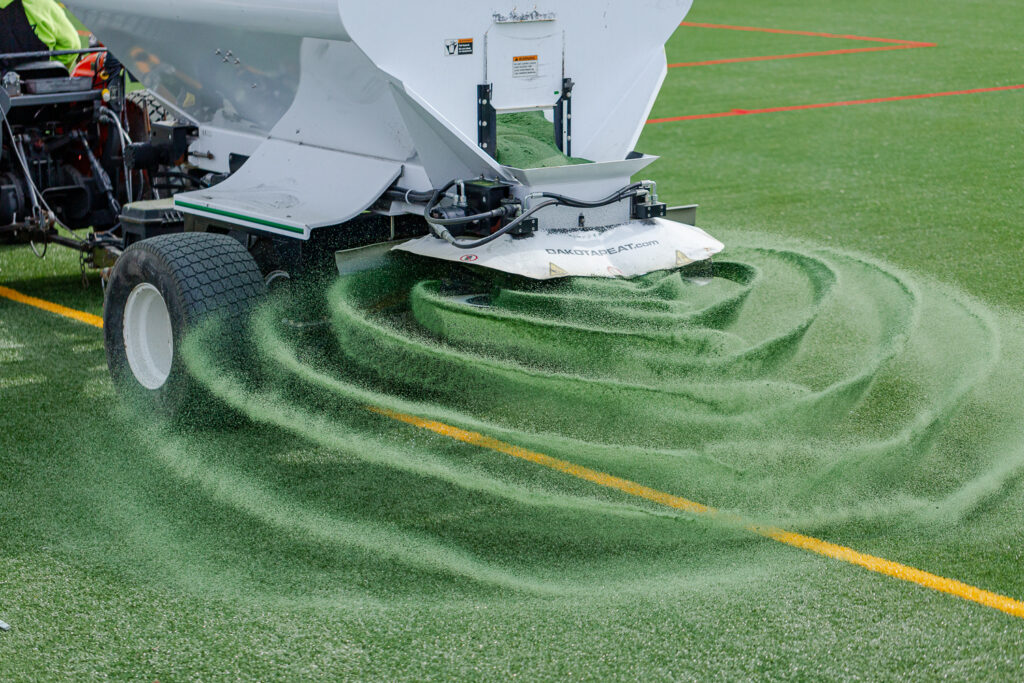
Sports Field Blog
Subscribe To Email Updates
Subscribe to our weekly newsletter and we’ll send updates straight to your inbox
How to Address Heat on a Synthetic Turf Field
July and August are some of the busiest months for activity on multi-purpose sports fields, as teams begin to prepare for the fall season – and they are also typically the hottest months of the year. For synthetic turf field owners, they pay special attention during this time to the temperature in the air, as well as on their field. The simple fact is: synthetic turf fields are hot when the temperature rises and the sun is beating down. When the temps do start to climb, there are some solutions to keep your athletes cool.
Don’t Pull Out the Hose
We’ve received calls from field owners asking if they can lightly water their turf to bring down the temperature. While this might sound like a quick fix, it can actually make the heat worse! Adding water to the field will temporarily cool it down, but after about 15-20 minutes in the sun, it will begin to feel more like a sauna. Think of when you have a summer thunderstorm; it feels cool for a brief period of time and then becomes super humid.

Change Up the Schedule
We know that scheduling all of the sports and teams preparing for the fall season can sometimes be a challenge, and the turf field is likely under use the majority of the summer days. However, trying to schedule practices around the peak temperature times of the day, such as mornings or in the evenings will help keep your athletes cooler. It is recommended to avoid the middle of the day, when the sun and temperatures are at their hottest.
Provide Shade & Water
Set up a misting station or tented area for the athletes on the sidelines and encourage use frequently throughout the activity. Fully stocked water stations are usually a staple of sidelines during the summer, but ensuring athletes are staying well hydrated during practices and games is imperative on an extra hot day.

Take Care of Each Other
To avoid injuries or other health concerns, it’s vital to keep an eye on your athletes and how they’re feeling, regardless of the season. Extreme temperatures in either direction, can potentially pose a risk to participants. With hot summer conditions, make sure you and your athletes are getting adequate breaks to rehydrate and cool off.
Future Field Planning
If heat on an artificial field is a concern to you, your community, or your stakeholders, there are turf fiber and infill options on the market that can provide cooler surface temperatures. When planning for a future synthetic turf field, talk with your provider to see what options might be available to you to alleviate any worries around heat from the field. We are happy to talk through what those choices are, the benefits, and if they are the right fit for your installation.
As mentioned, it is important to understand and be prepared for the fact that a synthetic turf field is hot when the weather is. You can contact us to get more information on those infill options, discuss other field considerations, or to chat about field maintenance.
Similar Blogs



